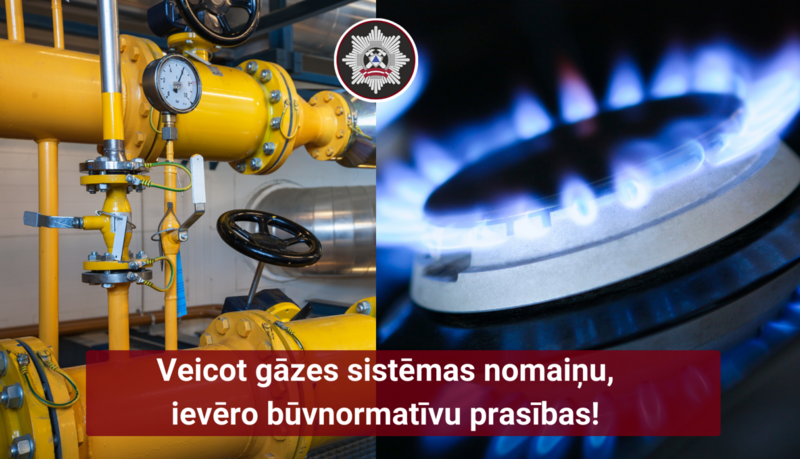Recent News
Competence Centers Announce New Research and Innovation Project Competitions for Companies
Published Friday, 13 June 2025Various Training Opportunities for Entrepreneurs to Improve Digital Skills
Published Thursday, 12 June 2025Repeated Verification of Water Consumption Meters in Apartments of Multi-Apartment Residential Buildings Has Been Cancelled
Published Monday, 09 June 2025Upcoming Major Changes in the BI: Introduction of the Building Profile
Published Wednesday, 14 May 2025
State Fire and Rescue Service (VUGD): Replacement of the gas system without adhering to building normative requirements can cause a fire
Published Friday, 06 October 2023With the increase in energy resource prices in the European Union at the beginning of this year, many households and industrial businesses are increasingly considering using liquefied petroleum gas (propane-butane) instead of natural gas due to economic advantages. Both types of gases can be used for building heating, but there are several differences between them. One of the most significant differences is the method of gas transportation and storage, namely, liquefied gas is delivered from its storage tank to the consumer's heating boiler through gas pipelines, while natural gas travels from its producer to the consumer's heating devices through gas pipelines.
If a consumer has been using natural gas but plans to switch to liquefied petroleum gas, the gas pipelines must be designed, and they must comply with the requirements of Latvian building norm LBN 243-15 "Internal and External Gas Pipeline System for Liquefied Petroleum Gas."
The experience of the State Fire and Rescue Service (VUGD) indicates that the statistics of fires and fire incidents may increase if residents and manufacturing companies, when rebuilding gas systems, have not adhered to current building norms, including regulations related to electrical safety, electromagnetic compatibility, as well as equipment used in explosive atmospheres and protective systems.
Often, heating boilers intended for natural gas are connected to portable tanks or pressure vessels with liquefied petroleum gas using a local rubber hose. According to the requirements of building normative acts, the external gas pipeline system, from the connection point to the tank or tank group to the internal gas pipeline system, must be constructed using steel pipes, placing them on building facades, retaining walls, or supports.
There are cases when the liquefied gas tanks used by consumers are certified (ADR), but tankers and structures on which they are installed are intended only for transporting liquefied gas, not for storage. Therefore, tank trailers with tanks cannot be used as stationary tanks, and this discrepancy increases the risks of fire and explosion.
Another significant violation of fire safety requirements is that liquefied gas tankers are installed directly next to buildings, thereby not observing fire safety distances. According to the requirements of building normative acts, gas storage tanks must be grounded and placed at a stationary fire-safe distance from buildings.
To ensure that this heating season proceeds without tragic fires, VUGD urges compliance with the fire safety requirements specified in normative acts. When reconstructing gas pipeline systems and carrying out construction work, it is essential to confirm the readiness of these devices for use with certificates of readiness for operation.